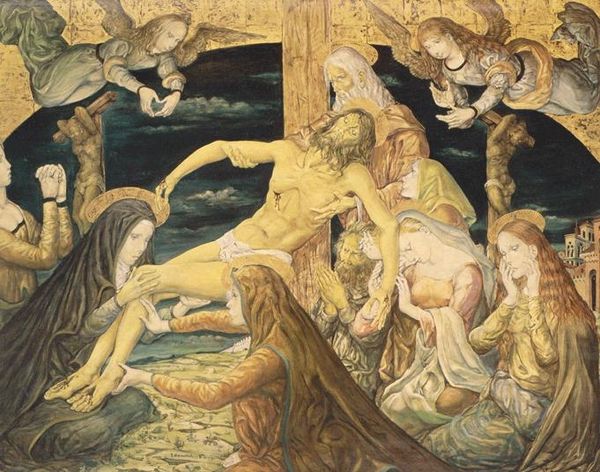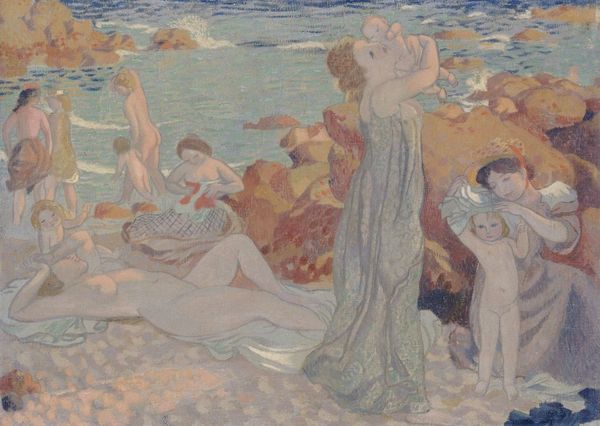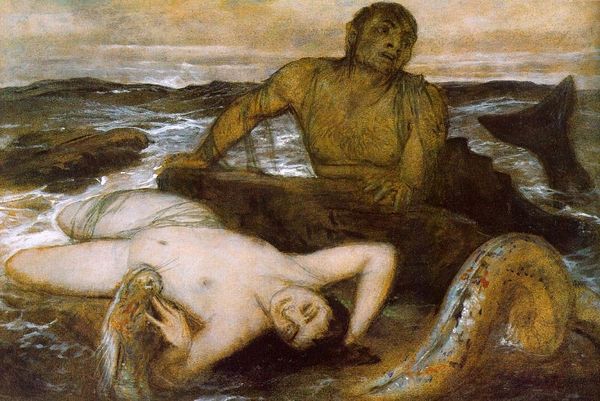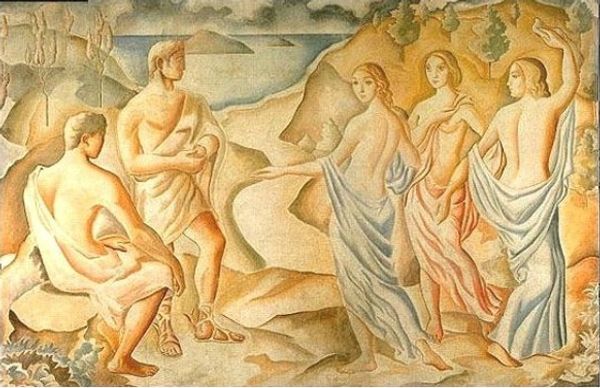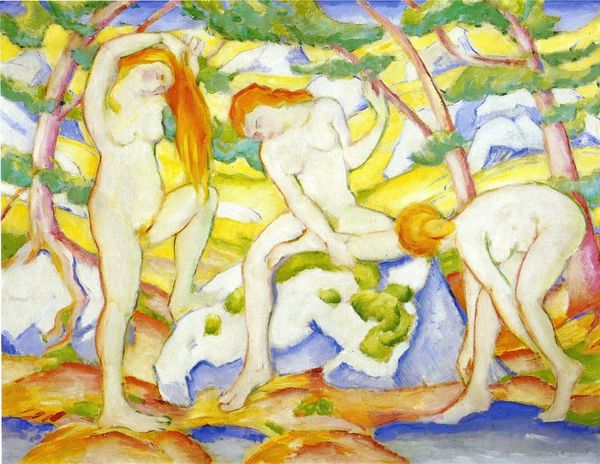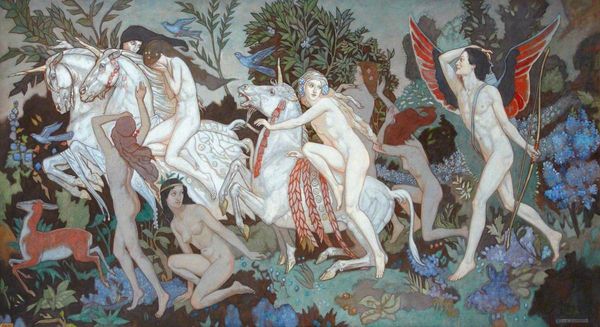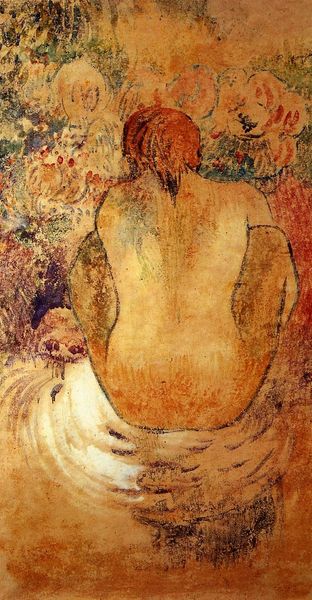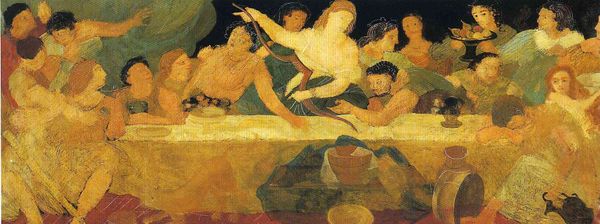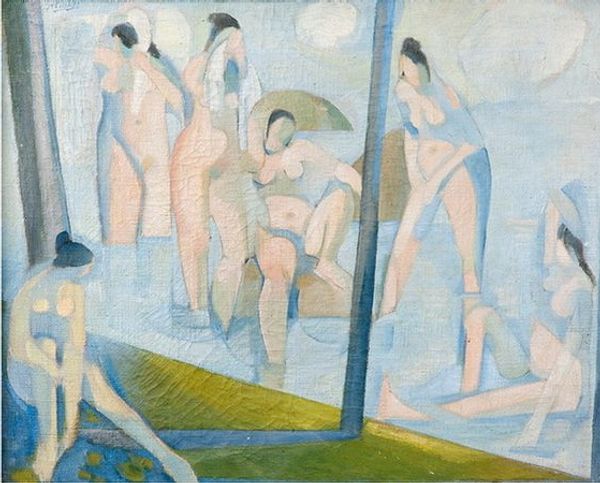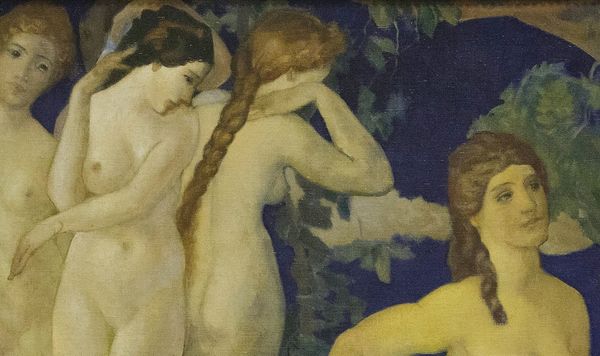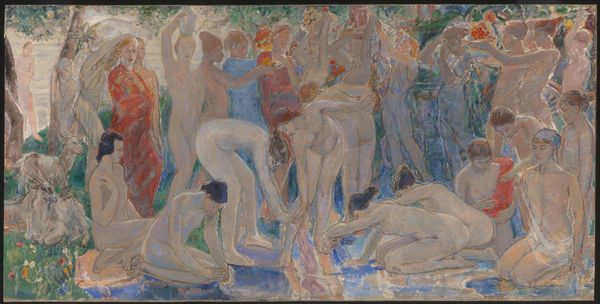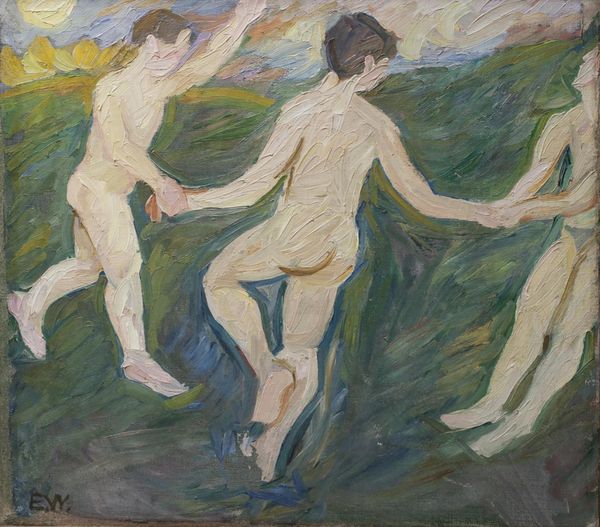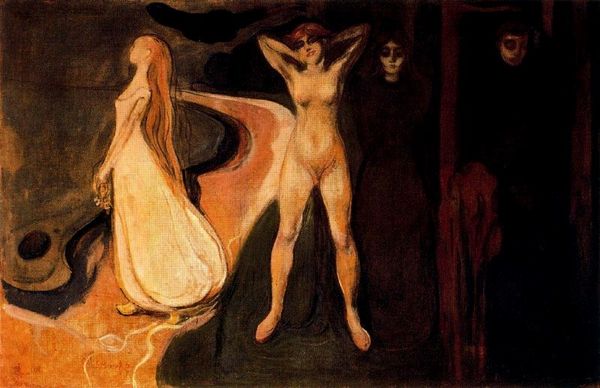
painting, fresco
#
allegory
#
painting
#
figuration
#
fresco
#
group-portraits
#
scottish-colorists
#
symbolism
#
nude
Copyright: Public domain
Editor: Here we have John Duncan’s "Phlegethon," a painting, possibly a fresco. There's a palpable sense of despair and raw emotion emanating from the figures, their gestures so dramatic and…well, unsettling. What strikes you when you look at it? Curator: Considering Duncan's engagement with Symbolism and Scottish cultural identity, I see "Phlegethon" operating within a specific visual and socio-political framework. We must ask, what narrative is Duncan constructing here, and how does it reflect or challenge prevailing attitudes toward women and allegory within the public art sphere of his time? Is this vulnerability, or perhaps defiance, against the structures they find themselves within? Editor: That's fascinating! I hadn't thought about defiance. Their poses seem almost… theatrical. Are you suggesting that the way this painting was displayed might be important to consider? Curator: Absolutely. Frescoes, with their inherent connection to architectural spaces, demand we consider the public accessibility and intended viewership. Who was meant to see this? What dialogue was Duncan trying to foster? The use of nude figures as well suggests an allusion to classical allegories, which in the Victorian and Edwardian periods were used to instruct certain moral values. What do we learn when the models do not pose passively? Editor: I see your point. It challenges traditional expectations, doesn't it? I guess I was caught up in the emotional impact, and missed the broader socio-political implications of the work’s initial presentation. Curator: And that emotional reaction is valid! It’s part of the work’s power. It makes us, as viewers, implicated within the dynamics being performed in this aesthetic event. The point is to not ignore how socio-political contexts of display further shape the viewing experience. What stories are permissible in a museum versus elsewhere? Editor: So, analyzing "Phlegethon" through a historical lens reveals how much more than raw emotion is at play here. The original intended viewers are part of the artistic statement. Thank you! Curator: Precisely. I'm so glad. It makes a difference to move from aesthetic emotion to considered placement, circulation, and eventual cultural acceptance.
Comments
No comments
Be the first to comment and join the conversation on the ultimate creative platform.
